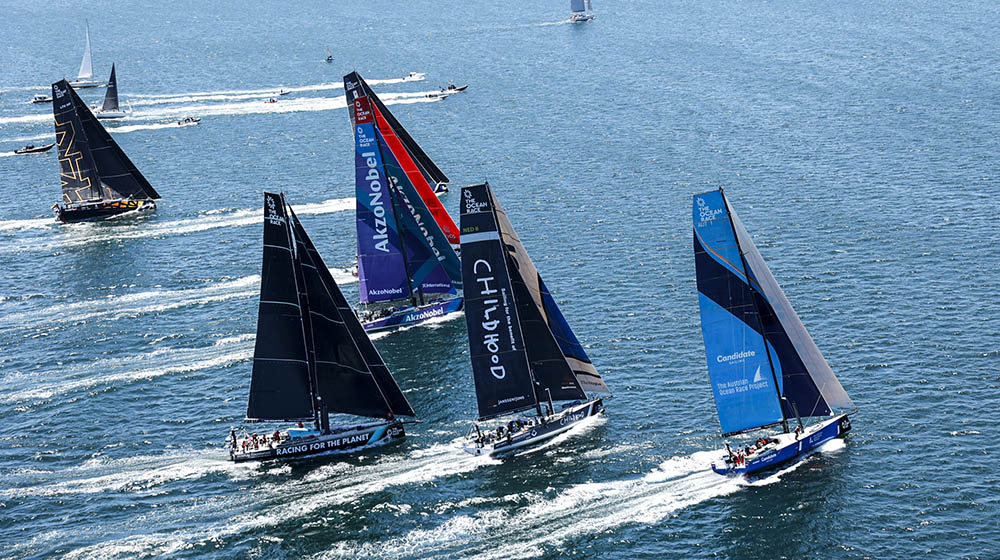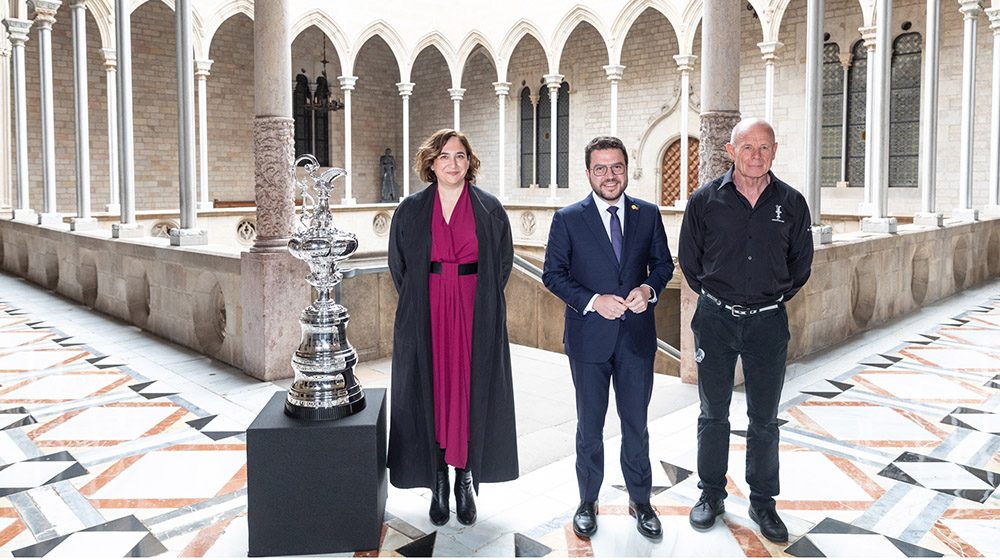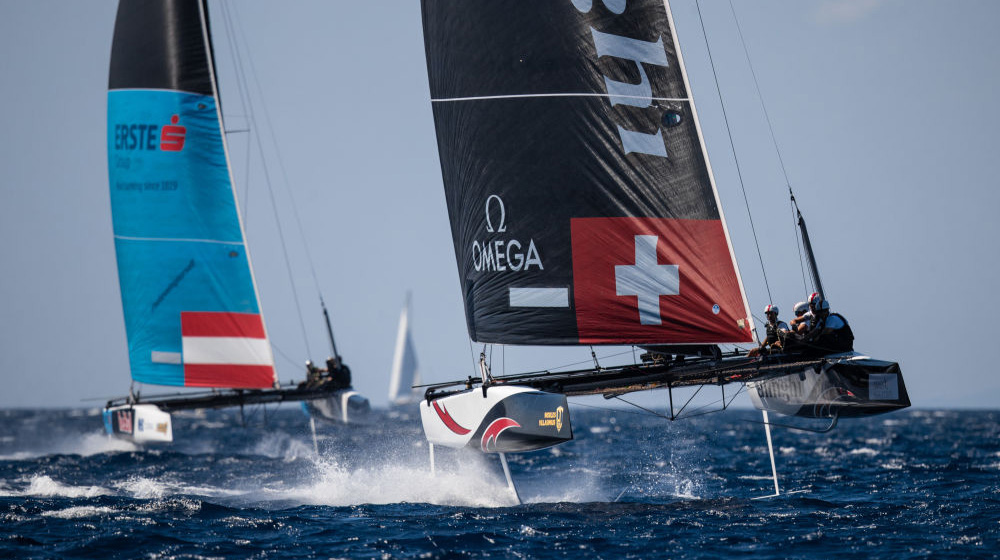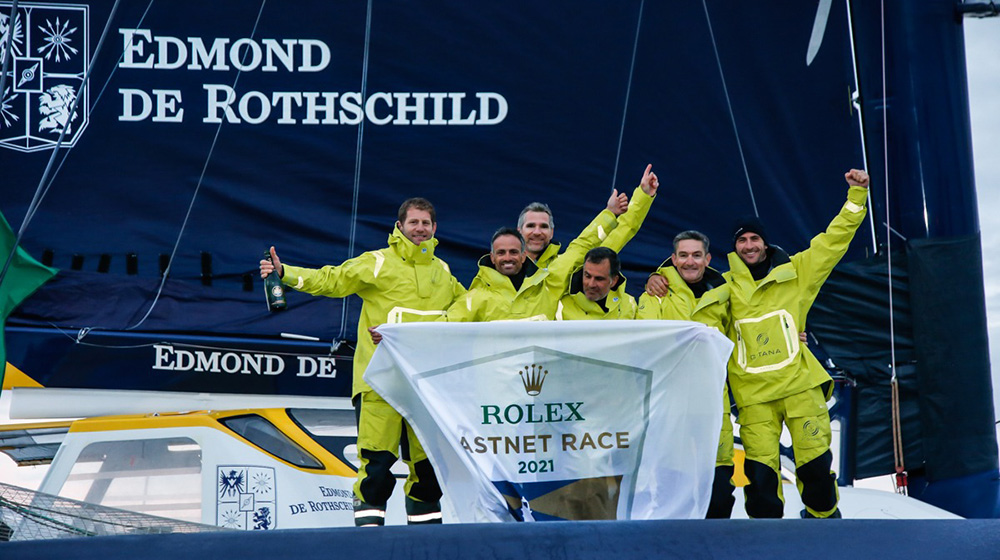
All you should know about the Vendée Arctique
The Vendée Arctique - Les Sables D’Olonne Race is departing on Sunday 12th June at 1700hrs local time. Find out the reason for the race, who is competing and what the course will look like.
The Vendée Arctique - Les Sables d’Olonne is the first qualifying race for the Vendée Globe 2024. Four more races allow candidates to qualify for the Vendée Globe: the Route du Rhum-Destination Guadeloupe (November 2022), the Transat Jacques Vabre Normandie Le Havre (November 2023), the Transat CIC Brest United States (May 2024) and the New York - Vendée (July 2024).
Related shows you will like: New York Vendée - Transatlantic Race, Transat Jacques Vabre 2021 Review, Vendée Globe Weekly Highlights
More about the race
This is the second edition of the Vendée Arctique - Les Sables d’Olonne, and on this occasion 25 solo sailors will set sail on a course that is about 3,500 nautical miles.
Although this distance is similar to the four yearly Route du Rhum Destination Guadeloupe Transat, ‘The Rhum’ races south and into trade winds, allowing skippers to sail faster in an established rhythm. Contrarily, in the Vendée Arctique they fight against strong, changeable winds of the North Atlantic, venturing into increasingly cold, unsettled, hostile seas.
Also, while the Vendée Globe heads south across the Equator, this race heads towards the Arctic Circle. The skippers will round to the north of Iceland, passing clockwise or anticlockwise depending on the weather.
You will find interesting: In the skin of a Vendée Globe participant
Born from the pandemic
This season is organised by SAEM Vendée, the same organisers from New York Vendée - Les Sables d’Olonne. Originally, the Vendée Arctique - Les Sables d’Olonne originated from a health crisis, and initially it was run by the IMOCA class.
As two key Transatlantic races were cancelled in the lead up to the 2020-2021 Vendée Globe due to the pandemic, skippers needed to test and prove the reliability of their boats in order to prepare for the Vendée Globe. As a result, they came up with the idea of racing into high northern latitudes for the first time, hence the start of the Vendée Arctique.
The first edition proved to be a great sporting challenge for all skippers, becoming internationally embraced by fans and becoming a key event on the IMOCA calendar.
Pole opposites
As skippers head to the north of Iceland, they pass into a new territory: a land of adventures in waters where the IMOCA fleet had never ventured before. Moreover, the Arctic Exclusion Zone (AEZ) is a no-go-zone due to security reasons as it is the most polar set in a sailing competition.
The boundary line to the north is at latitude 69º45.00 N, and the Arctic Circle is at 66º 30 N. During the Vendée Globe, skippers are limited to the south at 59º 30 S, meaning skippers limit to the south during the Vendée Globe would be an equivalent of the northern tip of Scotland.
This all means that skippers get closer to the pole during the Vendée Arctique than they do during the Vendée Globe, a completely new challenge for the bravest sailors.
The journey back
Getting back to Les Sables d’Olonne is not an easy task either. Often there are blocking high pressure systems with light winds in the Bay of Biscay, so the race is not over until the boats make it to the Vendée finish line.
It is expected that the race will take place between 10 and 12 days depending on the conditions of the sea. As it is extremely intense and tiring, skippers have to be on the top of their game as strategic options are limited and the weather systems pass fast and often.
“On the climb to Iceland there is a corridor where the depressions come from Newfoundland and the United States. They are pushed back to the north and circulate towards the west or east of Iceland. They will need to cross these depressions and the key is to choose the best moments to cross. It is complex because they move quite quickly and so they need to be vigilant. That will be interesting and engaging for race followers but that means an awful lot of work on board with many, many maneuvers, sail changes and a lot of navigation work”. -Christian Dumard, weather consultant for the Vendée Arctique - Les Sables d’Olonne.
More about the boats
For this race only the boats that entered the IMOCA Globe Series class are allowed to compete. This means that IMOCA racers cannot compete unless they entered into the series, the primary required qualifying series.
IMOCA boats are 60-foot long (18.28cm) and are monohulls built with a set of simple open rules that are limited only by certain parameters such as length, beam, draft and a one design keel system and rig. These boats can be equipped with foils.
The participants are aiming to aggregate racing miles and qualify for the Vendée Globe 2024.
The skippers of the Vendée Arctique
Skippers are French unless stated otherwise and the participants are:
- Fabrice Amedeo (Nexans – Art & Fenêtres)
- Romain Attanasio (Fortinet – Best Western)
- Éric Bellion (COMMEUNSEULHOMME POWERED BY ALTAVIA)
- Jérémie Beyou (Charal)
- Arnaud Boissières (LA MIE CÂLINE)
- Louis Burton (Bureau Vallée)
- Conrad Colman (Imagine)
- Antoine Cornic (EBAC Literie)
- Manuel Cousin (Groupe SÉTIN)
- Charlie Dalin (Apivia)
- Louis Duc (Fives – Lantana Environnement)
- Benjamin Dutreux (Guyot Environnement – Water Family)
- Benjamin Ferré (Monnoyeur – Duo For A Job)
- Pip Hare (Medallia)
- Isabelle Joschke (MACSF)
- Nicolas Lunven (Banque Populaire)
- Sébastien Marsset (Cap Agir Ensemble #sponsorsBienvenus)
- Giancarlo Pedote (Prysmian Group)
- Alan Roura (Hublot)
- Thomas Ruyant (LinkedOut)
- Damien Seguin (Groupe APICIL)
- Kojiro Shiraishi (DMG MORI GLOBAL ONE)
- Guirec Soudée (Freelance.com)
- Denis van Weynbergh (Laboratoires de Biarritz)
- Szalbocs Weöres (SZABI Racing)
Who to focus on?
Last edition’s winner was French skipper Jérémie Beyou, who won the first edition of the Vendée Arctique - Les Sables d’Olonne in the early summer of 2020. He was the fastest on the course of 2,807 theoretical miles and sailed onboard Charal, the same boat he is competing in this year.
Also in the podium, Charlie Dalin (Apivia) and Thomas Ruyant (LinkedOut) came in second and third spot. As LinkedOut won the 2021 Transat Jacques Vabre followed by Apivia and Charal, these three skippers have proved to be on the top of their game and are clear favourites in this year’s edition.













_v2.svg)
_v2.svg)









_v2.svg)


